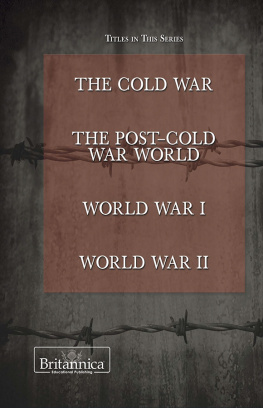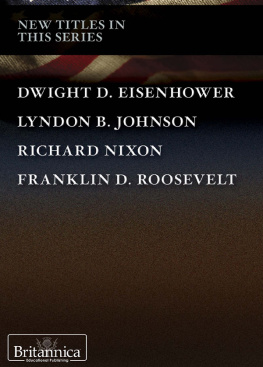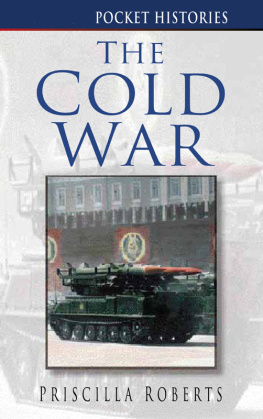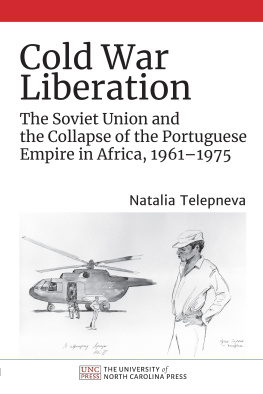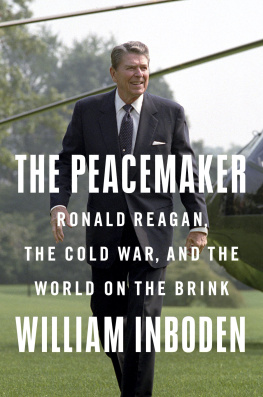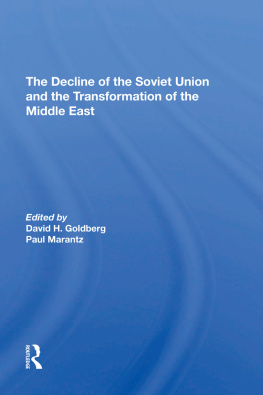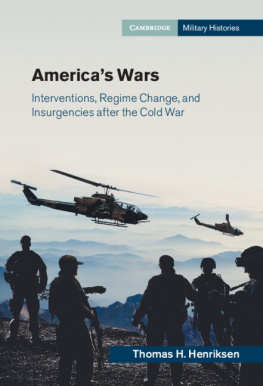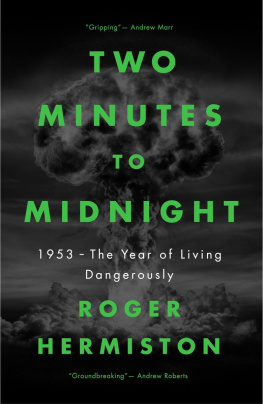THE COLD WAR

Published in 2017 by Britannica Educational Publishing (a trademark of Encyclopdia
Britannica, Inc.) in association with The Rosen Publishing Group, Inc.
29 East 21st Street, New York, NY 10010
Copyright 2017 by Encyclopdia Britannica, Inc. Britannica, Encyclopdia Britannica, and the Thistle logo are registered trademarks of Encyclopdia Britannica, Inc. All rights reserved.
Rosen Publishing materials copyright 2017 The Rosen Publishing Group, Inc. All rights reserved.
Distributed exclusively by Rosen Publishing.
To see additional Britannica Educational Publishing titles, go to rosenpublishing.com.
First Edition
Britannica Educational Publishing
J.E. Luebering: Director, Core Reference Group
Anthony L. Green: Editor, Comptons by Britannica
Rosen Publishing
Meredith Day: Editor
Nelson S: Art Director
Matt Cauli: Designer
Cindy Reiman: Photography Manager
Bruce Donnola: Photo Research
Library of Congress Cataloging-in-Publication Data
Names: Day, Meredith. | Britannica Educational Publishing.
Title: The Cold War / edited by Meredith Day.
Description: First edition. | New York : Britannica Educational Publishing in association with Rosen Educational Services, 2017. | Series: A political and diplomatic history of the modern world | Audience: Grades 7 to 12. | Includes bibliographical references and index.
Identifiers: LCCN 2015048889 | ISBN 9781680483505 (eBook)
Subjects: LCSH: Cold WarJuvenile literature. | World politics19451989Juvenile literature.
Classification: LCC D843 .C577243 2017 | DDC 909.82dc23
LC record available at http://lccn.loc.gov/2015048889
Contents
CHAPTER 1
THE COLD WAR BEGINS IN EUROPE
CHAPTER 2
THE COLD WAR IN ASIA AND THE MIDDLE EAST
CHAPTER 3
THE WORLD AFTER SPUTNIK
CHAPTER 4
ASIA BENEATH THE SUPERPOWERS
CHAPTER 5
PEACE AND CONFLICT IN THE 1970S
CHAPTER 6
RHETORICAL COLD WAR REVIVED
CHAPTER 7
THE END OF THE COLD WAR
F ollowing the surrender of Nazi Germany in May 1945 near the close of World War II, the uneasy wartime alliance between the United States and Great Britain on the one hand and the Soviet Union on the other began to unravel. By 1948 the Soviets had installed left-wing governments in the countries of eastern Europe that had been liberated by the Red Army. The Americans and the British feared the permanent Soviet domination of eastern Europe and the threat of Soviet-influenced communist parties coming to power in the democracies of western Europe. The Soviets, on the other hand, were determined to maintain control of eastern Europe in order to safeguard against any possible renewed threat from Germany, and they were intent on spreading communism worldwide, largely for ideological reasons.
Thus began the Cold War, the open yet restricted rivalry that developed after World War II between the United States and the Soviet Union and their respective allies. The Cold War was waged on political, economic, and propaganda fronts and had only limited recourse to weapons. The term was first used by the English writer George Orwell in an article published in 1945 to refer to what he predicted would be a nuclear stalemate between two or three monstrous super-states, each possessed of a weapon by which millions of people can be wiped out in a few seconds. It was first used in the United States by the American financier and presidential adviser Bernard Baruch in a speech at the State House in Columbia, South Carolina, in 1947. The Cold War had solidified by 194748, when U.S. aid provided under the Marshall Plan to western Europe had brought those countries under American influence and the Soviets had installed openly communist regimes in eastern Europe.
The Soviet Union essentially sealed off itself and its dependent eastern and central European allies from open contact with the West and other noncommunist areas, a political, military, and ideological barrier often referred to as the Iron Curtain. The term Iron Curtain had been in occasional and varied use as a metaphor since the 19th century, but it came to prominence only after it was used by the former British prime minister Winston Churchill in a speech at Fulton, Missouri, on March 5, 1946, when he said of the communist states, From Stettin in the Baltic to Trieste in the Adriatic, an iron curtain has descended across the Continent.
The Cold War reached its peak in 194853. In this period the Soviets unsuccessfully blockaded the Western-held sectors of West Berlin (194849); the United States and its European allies formed the North Atlantic Treaty Organization (NATO), a unified military command to resist the Soviet presence in Europe (1949); the Soviets exploded their first atomic warhead (1949), thus ending the American monopoly on the atomic bomb; the Chinese communists came to power in mainland China (1949); and the Soviet-supported communist government of North Korea invaded U.S.-supported South Korea in 1950, setting off an indecisive Korean War that lasted until 1953.
From 1953 to 1957 Cold War tensions relaxed somewhat, largely owing to the death of the longtime Soviet dictator Joseph Stalin in 1953; nevertheless, the standoff remained. A unified military organization among the Soviet-bloc countries, the Warsaw Pact, was formed in 1955; West Germany was admitted into NATO that same year.
Another intense stage of the Cold War was in 195862. In 1961, in order to stop the exodus of 2.5 million East Germans who had fled to West Germany via West Berlin, East Germany built a barrier to close off East Germans access to West Berlin. The Berlin Wall represented a physical manifestation of the metaphorical Iron Curtain and thus became a symbol of the Cold War as a whole.
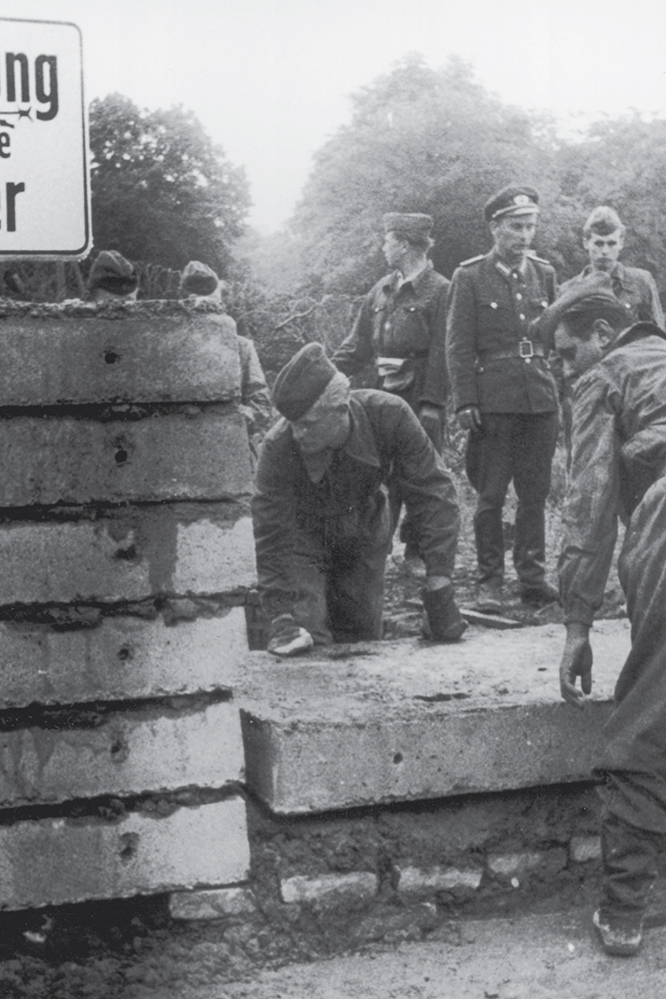
Soldiers lay bricks to build up the Berlin Wall in 1961.
Meanwhile, the United States and the Soviet Union began developing intercontinental ballistic missiles, and in 1962 the Soviets began secretly installing missiles in Cuba that could be used to launch nuclear attacks on U.S. cities. This sparked the Cuban missile crisis (1962), a confrontation that brought the two superpowers to the brink of war before an agreement was reached to withdraw the missiles. The Cuban missile crisis showed that neither the United States nor the Soviet Union were ready to use nuclear weapons for fear of the others retaliation (and thus of mutual atomic annihilation). The two superpowers soon signed the Nuclear Test-Ban Treaty of 1963, which banned aboveground nuclear weapons testing. But the crisis also hardened the Soviets determination never again to be humiliated by their military inferiority, and they began a buildup of both conventional and strategic forces that the United States was forced to match for the next 25 years.
Throughout the Cold War the United States and the Soviet Union avoided direct military confrontation in Europe and engaged in actual combat operations only to keep allies from defecting to the other side or to overthrow them after they had done so. Thus, the Soviet Union sent troops to preserve communist rule in East Germany (1953), Hungary (1956), Czechoslovakia (1968), and Afghanistan (1979). For its part, the United States helped overthrow a left-wing government in Guatemala (1954), supported an unsuccessful invasion of Cuba (1961), invaded the Dominican Republic (1965) and Grenada (1983), and undertook a long (196475) and unsuccessful effort to prevent communist North Vietnam from bringing South Vietnam under its rule.

